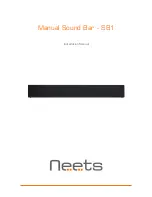
21-5400-7D0001/-
05/2023-EHT-466854
Notice Technical data subject to change without notice.
No claims for damage arising from alternations, errors or misprints shall be allowed.
Page 19 / 40
Selection of the required components for power connection, control and monitoring, end termination etc.
A typical heating circuit with self-regulating trace heaters consists of:
Power supply / cold lead cable connection
Trace heater splices / junctions (optional)
Control and monitoring units (optional)
End termination
Step 11: Determine the required trace heater power connection kit:
→ Example
From Step 10: 1 Heating circuit with 1 power connection kit = PBS-200-E
Step 12: Determine if control equipment is required:
BARTEC provides a variety of control products, from simple mechanical thermostats to sophisticated digital controllers and control and monitor-
ing systems designed specifically for use with our trace heating products. This section will help you select and specify the right control products
for your application.
General design considerations for temperature control:
When designing your trace heating system, you should consider the following factors:
Adding control elements increases the installation and maintenance costs of the heating system, but allows tighter temperature control, energy
savings and more efficient use of plant maintenance personnel’s time.
The thermal environment of a trace heating system varies greatly, especially at valves, pipe supports and other heat sinks. It is therefore sel-
dom possible to achieve very tight temperature control.
The temperature of a heat tracing system is based on ambient temperature and can vary by as much as 20 °C when the system is uncon-
trolled. You can choose between 2 approaches for temperature control:
Ambient sensing control
Ambient sensing control:
uses an on-off thermostat that senses ambient temperature
is more energy efficient than self-regulating control because
the heating circuit is energized only when the temperature
drops below the set-point
is most suitable for freeze-protection applications where
multiple circuits can be controlled by a single sensing point
flow path considerations (flowing or non-flowing) are not re-
quired with ambient control.
Line sensing control
Line sensing control:
regulates the desired maintain temperature by turning the
heating circuit on if the pipe temperature falls below the set-
point and turning it off if it exceeds the set-point
the most energy-efficient method for controlling heat tracing
is a line-sensing thermostat. because a flowing pipe will
typically not need any additional heat to keep it at the
proper temperature
needs a separate circuit controlled by a line-sensing ther-
mostat for each flow path
where a piping system has tees and therefore multiple flow
paths, more than one thermostat may be required.
NOTICE
Line sensing provides tighter temperature control than ambient sensing but flow paths may require additional controllers.
Line temperature sensor
Ambient temperature sensor
Line temperature sensor
















































